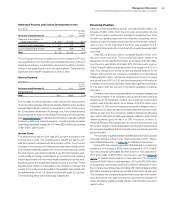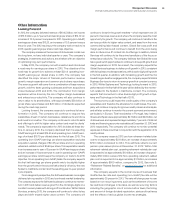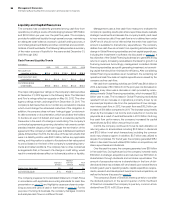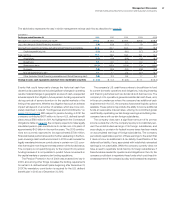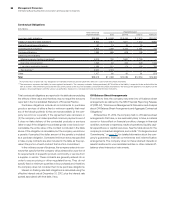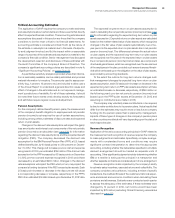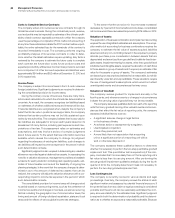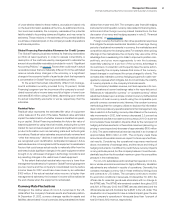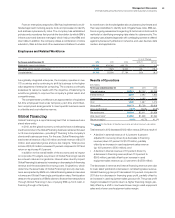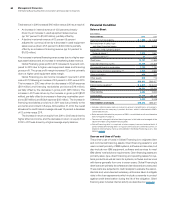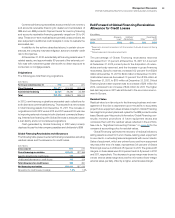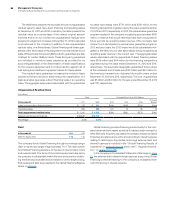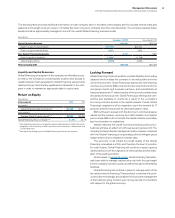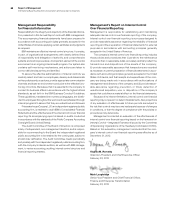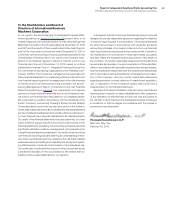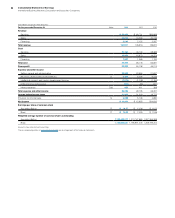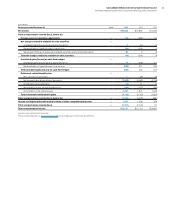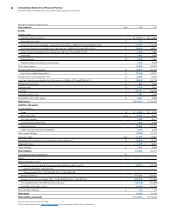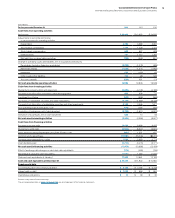IBM 2012 Annual Report Download - page 64
Download and view the complete annual report
Please find page 64 of the 2012 IBM annual report below. You can navigate through the pages in the report by either clicking on the pages listed below, or by using the keyword search tool below to find specific information within the annual report.
63
Management Discussion
International Business Machines Corporation and Subsidiary Companies
From an enterprise perspective, IBM has implemented a multi-
faceted approach involving people, tools, and processes to identify
and address cybersecurity risks. The company has established
policies and procedures that provide the foundation by which IBM’s
infrastructure and data are managed, which help protect IBM and
client data. In addition, the company utilizes a combination of online
education, Web articles and other awareness initiatives to enable
its workforce to be knowledgeable about cybersecurity threats and
their responsibilities to identify and mitigate these risks. IBM per-
forms ongoing assessments regarding its technical controls and its
methods for identifying emerging risks related to cybersecurity. The
company uses a layered approach with overlapping controls to defend
against cybersecurity attacks on networks, end-user devices, data
centers, and applications.
Employees and Related Workforce
Yr.-to-Yr. Change
For the year ended December 31: 2012 2011 2010 2012-11 2011-10
IBM/wholly owned subsidiaries 434,246 433,362 426,751 0.2%1.5%
Less-than-wholly owned subsidiaries 8,009 7,523 9,334 6.5 (19.4)
Complementary 24,740 25,500 27,784 (3.0)(8.2)
As a globally integrated enterprise, the company operates in over
170 countries and is continuing to shift its business to the higher
value segments of enterprise computing. The company continually
assesses its resource needs with the objective of balancing its
workforce globally to improve the company’s global reach and
competitiveness.
The complementary workforce is an approximation of equivalent
full-time employees hired under temporary, part-time and limited-
term employment arrangements to meet specific business needs
in a flexible and cost-effective manner.
Global Financing
Global Financing is a reportable segment that is measured as a
stand-alone entity.
In 2012, as the global economy continued to face a challenging
credit environment, the Global Financing business remained focused
on its core competencies—providing IT financing to the company’s
clients and business partners. For the year, Global Financing deliv-
ered external revenue of $2,013 million and total revenue of $4,073
million, and expanded gross and pre-tax margins. Total pre-tax
income of $2,034 million increased 1.1 percent compared to 2011 and
return on equity was 41.0 percent.
In addition to the overall health of the economy and its impact
on corporate IT budgets, key drivers of Global Financing’s results
are interest rates and originations. Interest rates directly impact
Global Financing’s business by increasing or decreasing both financing
revenue and the associated borrowing costs. Originations, which
determine the asset base of Global Financing’s annuity-like busi-
ness, are impacted by IBM’s non-Global Financing sales and services
volumes and Global Financing’s participation rates. Participation
rates are the propensity of IBM’s clients to finance their transactions
through Global Financing in lieu of paying IBM up-front cash or
financing through a third party.
Results of Operations
($ in millions)
For the year ended December 31: 2012 2011 2010
External revenue $2,013 $2,102 $2,238
Internal revenue 2,060 2,092 1,842
Total revenue 4,073 4,195 4,080
Cost 1,400 1,467 1,474
Gross profit $2,673 $2,728 $2,606
Gross profit margin 65.6% 65.0%63.9%
Pre-tax income $2,034 $2,011 $1,956
After-tax income* $1,362 $1,338 $1,292
Return on equity* 41.0% 40.7%41.1%
* See page 67 for the details of the after-tax income and return on equity calculation.
Total revenue in 2012 decreased $122 million versus 2011 as a result of:
• A decline in external revenue of 4.2 percent (1 percent
adjusted for currency) driven by a decrease in financing
revenue (down 8.7 percent to $1,471 million), partially
offset by an increase in used equipment sales revenue
(up 10.6 percent to $540 million); and
• A decline in internal revenue of 1.6 percent driven by
a decrease in financing revenue (down 11.3 percent to
$500 million), partially offset by an increase in used
equipment sales revenue (up 2.0 percent to $1,559 million).
The decreases in external and internal financing revenue were due
to lower asset yields and a decrease in remarketing lease revenue.
Global Financing gross profit decreased 2.0 percent compared to
2011 due to a decrease in financing gross profit, partially offset by
an increase in used equipment sales gross profit. The gross profit
margin increased 0.6 points due to a higher financing margin, par-
tially offset by a shift in mix toward lower margin used equipment
sales and a lower used equipment sales margin.


